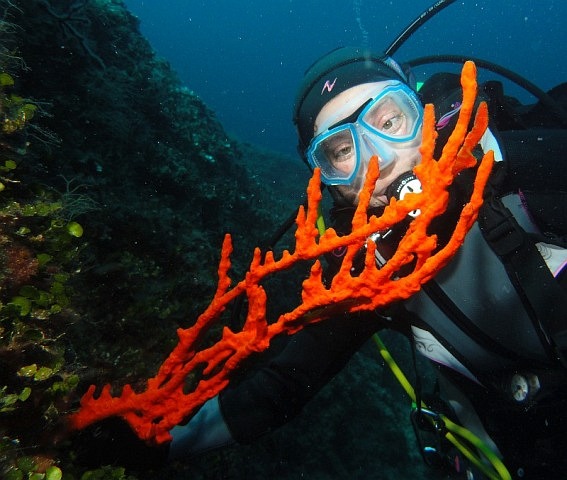The blue Adriatic
Articlepage 2/4
The huge area means it’s impossible to dive all the interesting spots of the country during a single trip. Even more challenging to tell which is the best place if you want to explore the Croatian Adriatic. In the north there is the Istrian peninsula where the water is a bit colder and sometimes the visibility is worse but as a reward you’ll find some of the most famous wrecks of the Adriatic here. The Baron Gautsch lies in 28-40 meters (90-130 feet) depth, the huge, 85 meters (280 feet) long passenger steamboat sank in 1914. Some people call it “The Titanic of the Adriatic". There are other wrecks from the WW I (Istra and Giuseppe Dezza) and WW II (Coreolanus, Maona). The typical maximum depth of them is 30-35 meters (100-115 feet) so only experienced divers can enjoy these wrecks. While the sunken ships make the Istrian diving special, the sometimes disappointing conditions and the most expensive dives of the country don’t make it that popular.
The Kvarner area can be easily reached from the capital, Zagreb. The largest island, Krk has many diving centers offering a wreck dive to the Peltastis cargo boat and many wall dives- some of them to the shore of the neighboring island, Cres. How does a typical Adriatic dive look like? While the water temperature on the surface is 23-26 degrees (73-79 F) in the summer, a few meters below it starts to drop fast. And the divers need to descend deep to find the interesting sights- so expect only 11-14 degrees (52-57 F) at 30 meters (100 feet) even in August. To feel the chill in a thin wetsuit is definitely a breathtaking experience. Between 25-40 meters (82-130 feet) purple and yellow gorgonians live, with luck you can find cat shark (or at least their eggs), moray or lobster in the holes. In the shallow during the safety stop most of the divers look for the incredibly flat John Dory fish, octopus in the holes, small crabs or nudibranchs on the rocks and some places are well known about their seahorses and pipefish. The torch is a must if you dive in Croatia and keen to see those hiding animals or you would like to see the bright yellow or impressive purple colors of the depth. Certainly it’s more than useful at deep wrecks and in caverns as well.
 |
|
Click for the gallery
|
Because of the not too rich flora and fauna it’s quite easy to predict what waits you in the specific dive site. Don’t expect tunas, sharks, stingrays or manta rays under water. Maybe with a little luck you encounter dolphin families during boat ride- sometimes the trip is more exciting than the dive. After mooring the dive guide will tell you where live the gorgonians, where lies amphoras, they know the places where you have better chances if you look for seahorses, etc. After a few dozen Adriatic dives even I’m able to name many spots where specific animals live.
At my favorite shore dive place near Pag island in Stara Novalja village I usually descend to the sea grass and start to swim very slowly and carefully. I don’t need to hurry, in that 4-5 meters (13-16 feet) depth I can spend more than an hour easily. I look around near the old steel frames, I check the tires and rock piles to find some shy octopus, but I spend most of my time under water with exploring the grass until I find the blade which seems thicker. As I gently fin closer the silhouette becomes obvious: a small brownish, green or yellow animal tries to hide. Easy to identify because its head’s shape looks somehow familiar- but only divers expect a horse under water. Finding your first one is unforgettable but if you really love seahorses you must learn how to locate them.
Az írás a következő oldalon folytatódik!
 (average: 3.3) average conditions
(average: 3.3) average conditions 


















